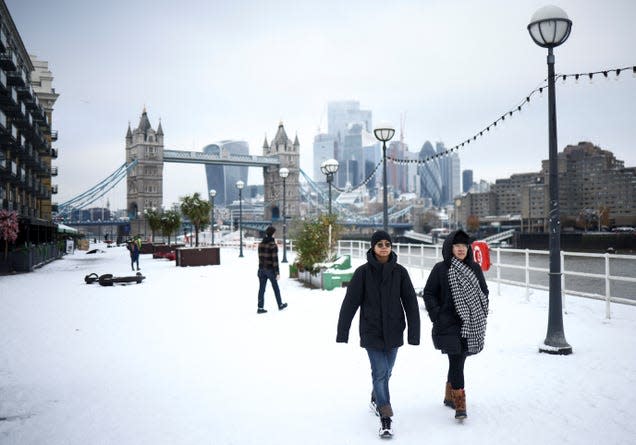Can Europe survive the dreaded dunkelflaute?

Will Europe be able to supply affordable, reliable electricity this winter? The answer depends on, among other factors, the whims of Russian natural gas exporters and maintenance work on nuclear power plants in France. But it also depends on the weather—not just the temperature, but the severity of a curious meteorological phenomenon called “dunkelflaute.”
A German compound word meaning “dark doldrums,” dunkelflaute is used by energy experts to refer to a period that is cloudy, cold, and windless. It creates a headache for anyone operating an electric grid that relies a lot on solar and wind energy and that supplies households with electric heating—as is the case in much of Europe and the UK.
Read more
When dunkelflaute events occur, European grids have to fall back on other energy sources, especially gas. Normally that’s not a big deal, but this winter, with gas supplies very tight, prolonged or frequent dunkelflautes would raise the risk of blackouts and sky-high electric bills.
The UK is a case in point. The country is currently experiencing a dunkelflaute, with cold, cloudy, still weather. Wind energy production, which is normally about one-fifth of the UK’s electricity mix, is now less than 4%. Gas plants are running full-steam to catch up, and some scarcely used coal stations have been brought on standby, although they haven’t been used yet.
How do dunkelflaute events happen?
Dunkelflaute events lasting a day or two are fairly common in Europe between November and January, adding up to 50-100 hours on average per month, according to a 2021 study by the Delft University of Technology. They happen when an area of high atmospheric pressure containing clouds is surrounded by winds.
Typically the effect is muted by the interconnectedness of Europe’s electric grid. A country experiencing dunkelflaute can just import more electricity from a neighbor. Events lasting a couple of days can also be managed by pausing industrial activity and EV charging, and drawing on utility-scale battery storage, said Lukas Bunsen, head of research for central Europe at Aurora, an energy market analytics firm.
“But after about two days, you’re in a world where batteries can’t help you much anymore, and industries may not be willing to pause production for that long,” he said. Events that cover a majority of the continent and last more than two days happen about once every five years, Bunsen said.
How Europe can prepare for dunkelflaute
This year, dunkelflaute poses a bigger risk than normal. About half of France’s nuclear plants are offline for maintenance, removing a key source of backup electricity for the continent. EU electricity prices, although lower than their record peaks in August, are still above €400 per megawatt-hour, far higher than before the war in Ukraine. European countries have stored away enough gas to make blackouts unlikely, but if the weather turns exceptionally bad, all bets are off.
In the coming decades, when solar and wind will generate most of the electricity in Europe, dunkelflaute events will pose a market design challenge, Bunsen said. In the long term, the more a grid sources energy from renewables, the greater the potential disruption a dunkelflaute can cause. Alternatives power plants, running on gas or nuclear, will be needed to maintain supply during those rare but inevitable moments when demand is too high for renewables to meet.
In a 2021 analysis, Bunsen’s firm projected that in Germany, once the country reaches its goal to run entirely on renewables, the gap between electricity demand and supply during the most extreme dunkelflautes could be about 10 gigawatts. That’s equal to about a dozen typical gas or nuclear plants.
If those plants operate for only a few hours per year, though, they won’t be able to pay back their investors; the cost of building and maintaining them would be absurdly high as well. So the UK, Germany, and other European countries either have or are considering instituting a “capacity market,” in which private investors get paid to keep a certain amount of electricity production capacity available even if it isn’t used.
Creative market designs, better batteries, more wide-reaching grids, and smart-grid technologies that automatically turn down power-guzzling machines during times of peak demand will all be needed to keep the dreaded dunkelflaute from becoming too dangerous.
More from Quartz
Sign up for Quartz's Newsletter. For the latest news, Facebook, Twitter and Instagram.

